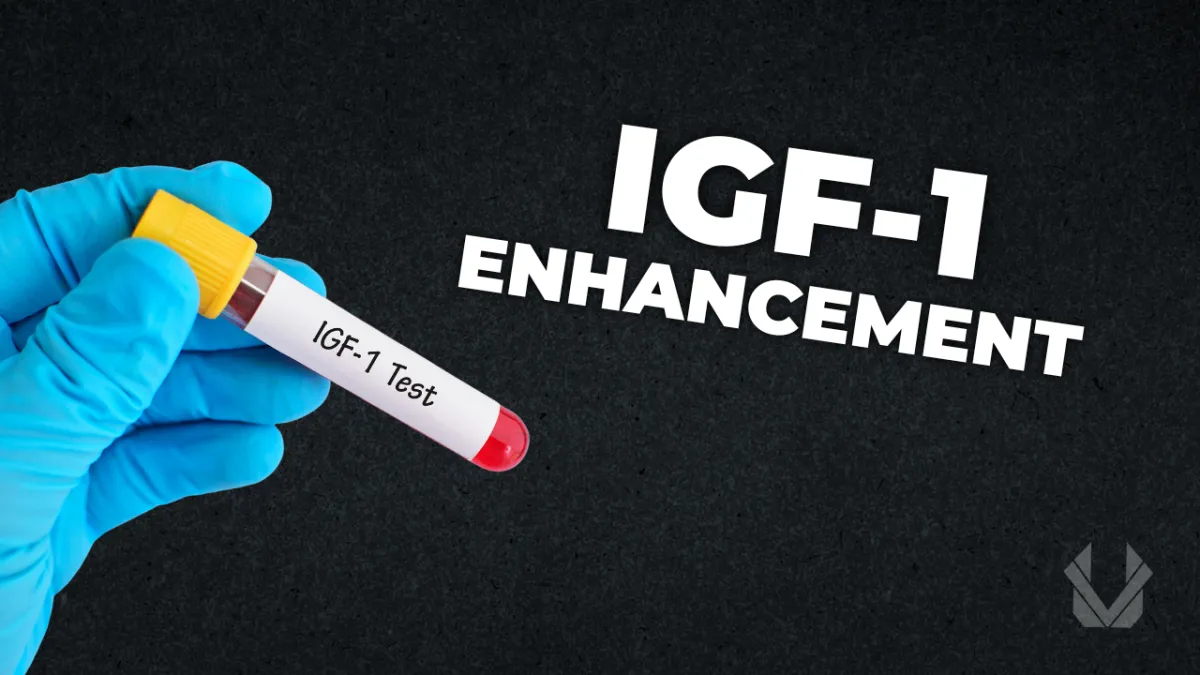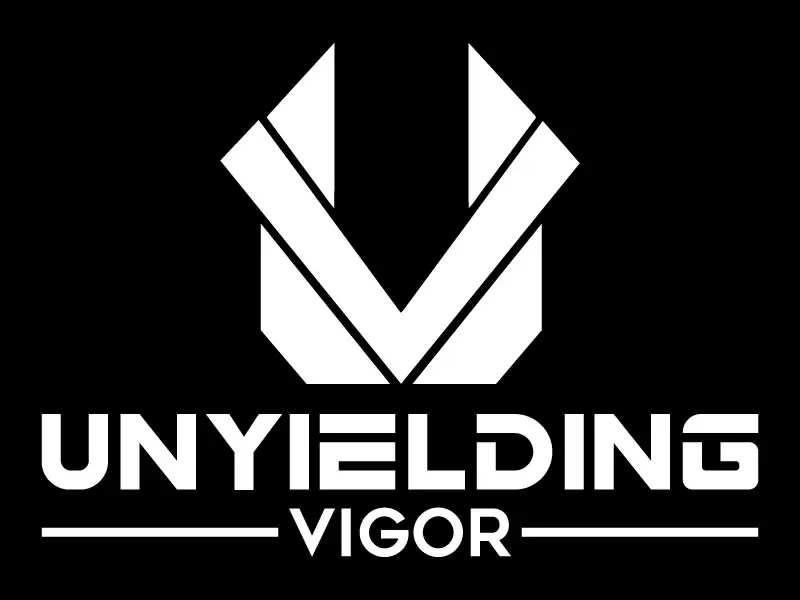THE UNYIELDING VIGOR BLOG
Our goal is to give you the most scientifically accurate and POWERFUL biological enhancement resources in the world
We're here to set new standards for truth, accuracy and effectiveness in the health industry. You'll find more value and scientific proof in our free articles than in most content you pay for.

IGF1 Benefits
The Power of IGF-1 and How to Enhance It
Insulin-like Growth Factor 1 (IGF-1) is a crucial protein primarily produced in the liver in response to growth hormone stimulation. Its significance lies in its multifaceted roles: promoting growth during childhood and adolescence by stimulating the growth of bones, cartilage, and various tissues; aiding in the development and repair of skeletal muscles through enhanced protein synthesis and cell proliferation; supporting tissue maintenance and counteracting the effects of aging by promoting cell survival and tissue integrity. Additionally, IGF-1 potentially contributes to neuroprotection by facilitating the growth and health of neurons. Its multifaceted functions make it a fundamental factor in human development and overall well-being.
As a proliferative compound, I have personally dabbled with IGF-1 promoting compounds for the sake of muscle enhancement, and it’s fair to say it made my muscles feel much fuller.
Not to mention my mood also improved and there was a noticeable antidepressant effect.
Read below to gain a deeper understanding of how IGF-1 benefits us in a diverse amount of ways and also learn some of the best ways to boost this growth pathway. From its role in muscle enhancement to the lesser-known realms of mood regulation and mental health, the benefits of IGF-1 are as expansive as they are intriguing.
The importance of IGF-1
Tissue repair
Insulin-like Growth Factor-1 (IGF-1) plays a crucial role in the intricate process of tissue repair within the human body ¹. IGF-1 serves as a key mediator in the cellular responses that drive tissue regeneration and healing. Upon tissue injury, IGF-1 is released and acts as a powerful stimulant for cell proliferation, migration, and differentiation, particularly within the affected area. By interacting with specific receptors on the surface of cells (namely the IGF-1R), IGF-1 triggers a cascade of intracellular events that promote the synthesis of proteins essential for tissue repair, such as collagen and elastin ². Not only does IGF-1 accelerate the formation of new tissue, but it also aids in the restoration of blood vessels and the overall remodeling of the damaged site. As a result, IGF-1 stands as a vital factor in orchestrating the intricate dance of cellular interactions required for efficient tissue repair, ultimately contributing to the restoration of form and function in the body.
While chronically high IGF-1 levels may not be too healthy, in the short term it may be very useful if one is suffering from some sort of injury. For this purpose, I would also recommend injecting BPC-157 locally. This peptide has been well known for its healing effects. Furthermore, BPC-157 increases the expression of the GH receptor ³, thus providing evidence for its synergy with HGH and HGH-releasing peptides.
Hypertrophy & Hyperplasia
Unsurprisingly, IGF-1 has notable impacts on both hypertrophy and hyperplasia, two fundamental processes in the growth and development of tissues. In hypertrophy, IGF-1 acts as a potent stimulator of muscle and tissue enlargement. It binds to its receptor, the IGF-1 receptor (IGF-1R), activating a signaling cascade that involves the phosphoinositide 3-kinase (PI3K)/Akt pathway and the mammalian target of rapamycin (mTOR) complex ⁴. This signaling pathway leads to increased protein synthesis and reduced protein degradation, resulting in the enlargement of individual cells.
In hyperplasia, IGF-1 promotes the proliferation of cells, leading to an increase in their numbers. IGF-1's interaction with its receptor on the cell surface triggers the mitogen-activated protein kinase (MAPK) pathway. This pathway drives cell division and replication ⁵, allowing for the expansion of tissue through the formation of new cells.
Bone density & growth
IGF-1 also exerts significant influence on bone density and growth. In bone tissue, IGF-1 enhances the activity of osteoblasts ⁶, the cells responsible for bone formation. It stimulates these cells to produce more collagen and other components of the extracellular matrix, leading to increased bone mineralization and, consequently, higher bone density. Moreover, IGF-1 plays a central role in longitudinal bone growth by promoting the proliferation of chondrocytes in the growth plates of long bones ⁷. This results in the elongation of bones during childhood and adolescence. Thus, IGF-1 is a key player not only in maintaining bone density throughout life but also in ensuring proper bone growth during crucial developmental stages, ultimately contributing to skeletal health and stature.
Skin Health
IGF-1 holds significant promise in promoting skin health and rejuvenation. One key mechanism by which IGF-1 benefits the skin is through its stimulation of collagen synthesis. Collagen, a vital structural protein in the skin, provides elasticity and firmness. IGF-1 activates the PI3K/Akt pathway, which leads to increased collagen production in fibroblasts ⁸ ⁹, the cells responsible for creating connective tissue. This elevated collagen production contributes to improved skin texture, reduced wrinkles, and enhanced overall skin tone.
Moreover, IGF-1 plays a crucial role in regulating skin cell turnover. It promotes the proliferation of keratinocytes ¹⁰, the predominant cells in the outer layer of the skin. This accelerated cell turnover aids in the healing of wounds, reduces the appearance of scars, and contributes to a more youthful complexion.
Neuroprotection & Neurogenesis
IGF-1 extends its remarkable influence beyond peripheral tissues and into the intricate realms of neurogenesis and neuroplasticity within the brain. This multifaceted hormone plays a pivotal role in fostering the formation of new neurons, or neurogenesis, particularly in regions like the hippocampus, critical for learning and memory ¹¹. IGF-1 enhances the survival, proliferation, and differentiation of neural progenitor cells ¹² ¹³ ¹⁴, ensuring a continuous supply of fresh neurons to support cognitive functions.
Additionally, IGF-1 actively participates in neuroplasticity ¹⁵, the brain's remarkable capacity to adapt and rewire itself in response to experiences and learning. By modulating synaptic plasticity, IGF-1 promotes the strength and efficiency of neuronal connections, which is vital for learning, memory consolidation, and recovery from injuries or degenerative conditions.
How to boost IGF-1
Calorie surplus
A calorie surplus, where one consumes more calories than their body needs for maintenance, can boost insulin-like Growth Factor-1 (IGF-1) levels through several mechanisms such as mTOR ¹⁶. When the body receives an excess of calories, especially from protein-rich sources ¹⁷, it triggers the release of insulin from the pancreas. Insulin, in turn, stimulates the production of IGF-1 in the liver. Additionally, a calorie surplus provides the energy and nutrients necessary for tissue growth and repair, including muscle tissue, which further enhances IGF-1 secretion.
Creatine
Creatine is a well-known dietary supplement that has been linked to an increase in insulin-like Growth Factor-1 (IGF-1) levels ¹⁸ ¹⁹. Creatine supplementation can lead to an expansion of muscle mass and improved muscle performance. This increase in muscle mass is thought to stimulate IGF-1 production through mechanical and metabolic pathways. When muscle tissue is stressed during resistance training, it produces IGF-1 as part of the natural muscle repair and growth process. Creatine's ability to enhance muscle protein synthesis and cellular hydration may contribute to this phenomenon. Additionally, creatine can optimize energy stores within muscle cells, potentially extending the duration and intensity of workouts, which could further stimulate IGF-1 production.
I personally recommend kre-alkalyn, a buffered form of creatine.
Ipamorelin & Mod GRF
Ipamorelin and Modified Growth Hormone Releasing Factor (Mod GRF) are both synthetic peptides used in the realm of growth hormone (GH) and insulin-like Growth Factor-1 (IGF-1) optimization. They work synergistically to boost IGF-1 levels in the body.
Ipamorelin is a selective GHRP (growth hormone releasing peptide) that stimulates the pituitary gland to release more GH ²⁰. It does so without significantly impacting other hormones like cortisol, making it a favorable option for those looking to enhance GH and IGF-1 levels. The secreted GH subsequently stimulates the liver to produce more IGF-1.
Mod GRF (also known as CJC-1295 without DAC) complements Ipamorelin by extending the release of GH from the pituitary gland. It does this by preventing the natural degradation of GH-releasing hormone (GHRH), thereby prolonging its activity. This results in a more sustained release of GH, which leads to increased IGF-1 production in the liver.
When injected together, the growth hormone pulse created is much larger than any pulse achieved using the compounds alone, creating a 1+1=3 like effect ²¹.
Unleash your Vigor and Conquer Your Limits,
-Thomas Muldoon
GET OUR NEW, FREE TESTOSTERONE SUPPLEMENT GUIDE FOR 2024
Toxic Testosterone: The Hidden Health Risks of the 6 Most Common Testosterone Supplements
(Created and proven with the results of 107 scientific studies)

Unleash Your Vigor & Conquer Your Limits!
-Unyielding Vigor

